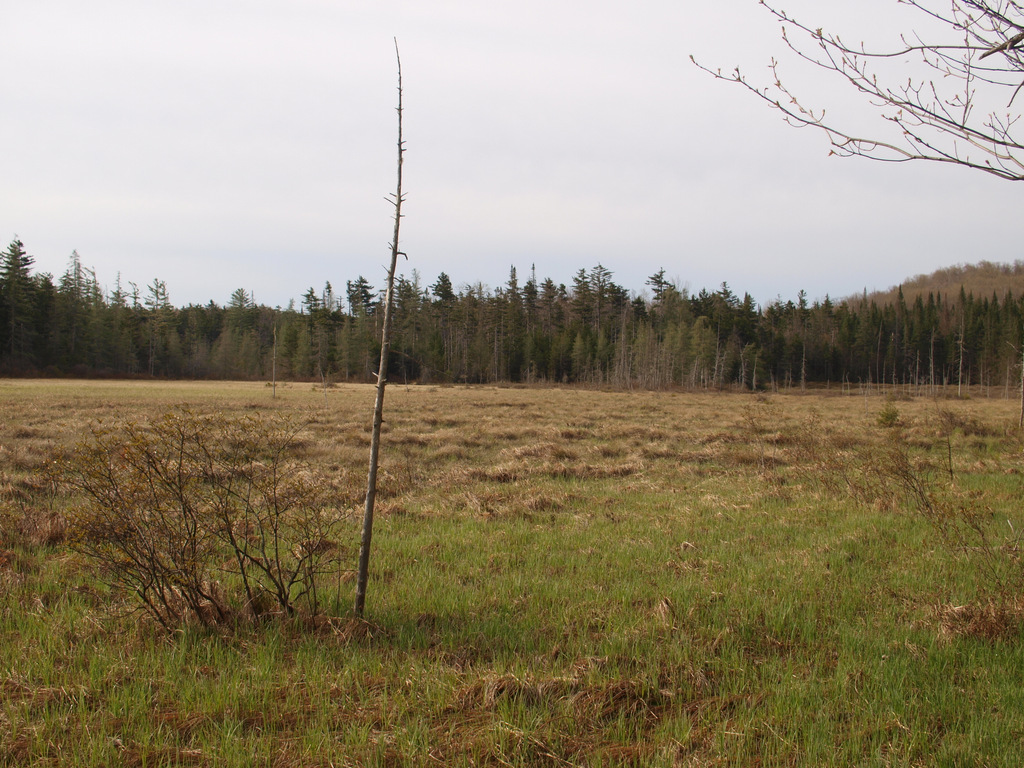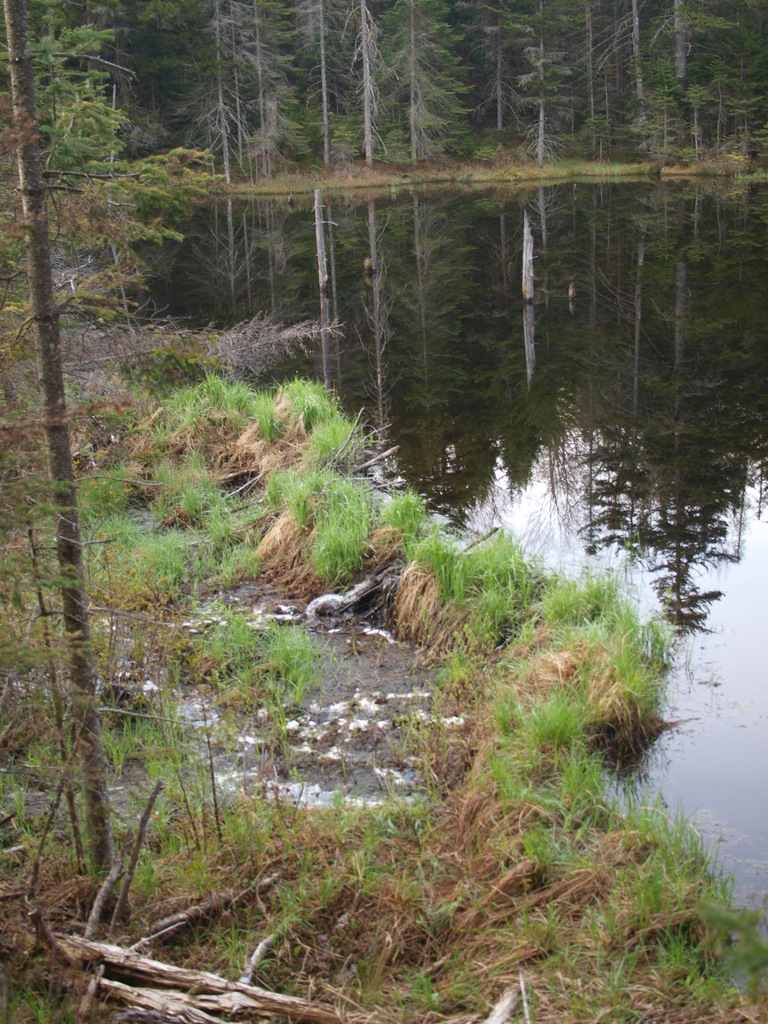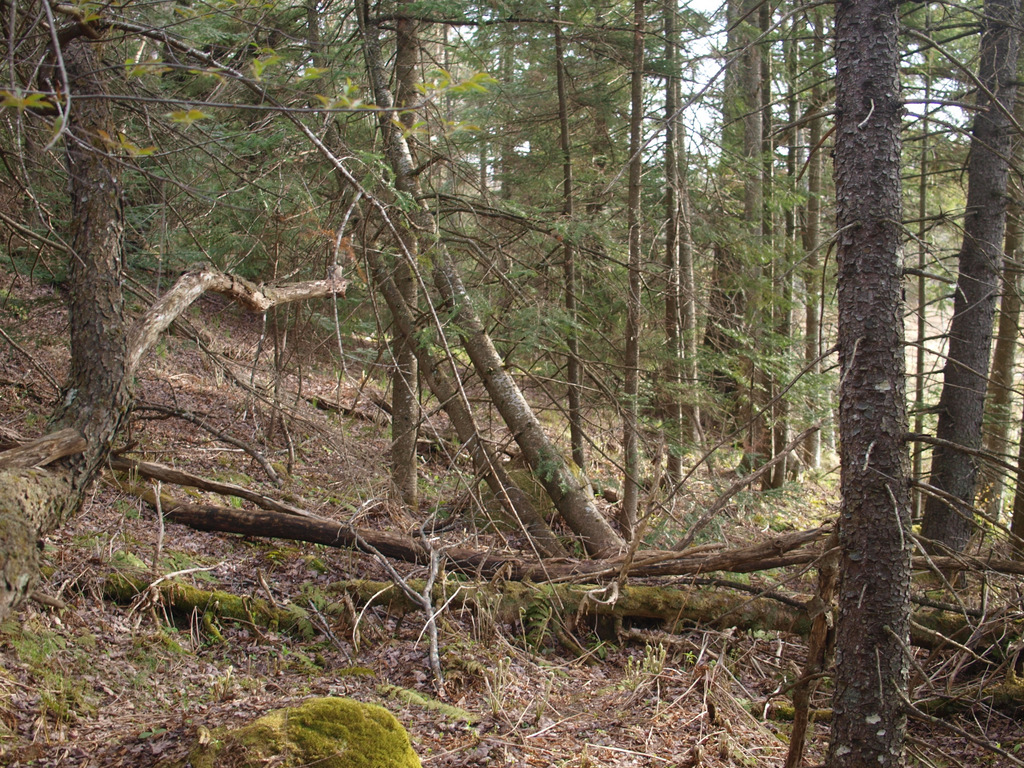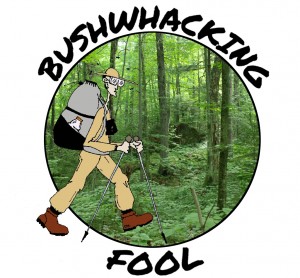
BZZZZZZZZZZZZK!!!
The metallic staccato buzz startles me awake at midnight, just about four hours after setting my head down for sleep. My sleep-induced stupor temporarily robs me of all sense of orientation, including recognizing my radio’s alarm, which I set only hours ago. It takes a few moments before my wits return to me and I recall my location at First of Four Ponds, just south of Big, Bad Leroy Bog. The initial panic of dislocation quickly subsides until it dawns on me that I am once again in my happy place within the eastern portion of the Pepperbox Wilderness Area, nestled within the northwestern Adirondack Park.
More importantly, I realize the Birdathon has begun!
Date: May 21, 2016
Length: 0.7 miles (0.7 day, 6.3 trip)
Difficulty: Moderate (bushwhack)
However, before any nighttime birding commences, a more immediate concern requires addressing, so I pull on my boots and head out to pee. Luckily, the sky is clear and the moon is bright, providing ample light, allowing me to avoid poking my eyes out as I venture through the maze of coniferous trees, in search of the ideal place to urinate. More importantly, the high visibility makes it immensely easier to avoid peeing on my feet, or even worse, on my leg.
As I set out to do my business, a barred owl hoots off in the distance, becoming the first species record for the big day. One species down, but unfortunately, there are so many more to go before the day is done.
My second species calls off to the west before I even make it back to the tarp. The yodel of the common loon is no stranger to the evening hours, as they often call during the nighttime. Given the direction, it must be on Sunshine Pond, which seems likely, as it is the largest body of water in that direction. With any luck, I will see the large water bird in person later today.
I return to my still warm sleeping bag with an empty bladder and two species already in the record book; not bad for the first fifteen minutes of the Birdathon. The diminishing return of species before dawn convinces me to return to the world of slumber for at least four more hours. I drift off while the American toads and spring peepers serenade me to sleep, just as they did earlier in the evening.
Morning Chorus at First of Four Ponds
The alarm reawakens me around four in the morning, which sends me through the same itinerary of events as before; off to pee and then back to my sleeping bag, but unfortunately, this time without any new species. Just as before, I return to the warmth of my sleeping bag, but this time I pull in my clothes after me to pre-warm them before finally slipping them on for the first time today.
The moon is low on the southern horizon now, and the temperature has plummeted at least ten degrees since midnight, with it currently hovering around 40 degrees Fahrenheit. A barred owl continues to call off to the west, which makes me wonder whether it has been at it since my first trip outside earlier.
After a half-hour of clothes warming, an ovenbird sings its “Teacher, teacher, teacher” song nearby, then goes silent. Fifteen minutes later, a Swainson’s thrush, a yellow-rumped warbler, and a white-throated sparrow join in the singing, and this is even before the sun has shown itself. A duck flies over, its wings whistling as it goes by overhead, most likely a common goldeneye.
The Birdathon morning is in full throttle now, which makes lying around enjoying the warmth of my sleeping bag no longer an option. With that revelation, I jumpstart the process of dismantling my campsite, making small, yet vital steps toward beginning my long bushwhack to Cropsey Pond, located way off to the southwest.
Breaking camp proceeds quickly, beginning with my sleeping stuff, which gets packed away immediately after putting my hiking clothes on. This is the most difficult step of packing, not because the sleeping bag and pads are especially onerous to pack, but because the stench of my hiking clothes is overpowering. When my nausea clears, half of my stuff goes directly into the backpack, including my sleeping gear, while the other half goes outside the shelter, where it awaits its turn for packing later in the middle of my backpack.

After everything is finally out of my shelter, the insect netting comes down, where it and the ground cloth follow one another into my backpack. It is now finally time for breakfast, after which the remaining gear goes into my backpack, along with what is left of my food. Last, I take down the tarp, which I left up just in case it rains, not to mention that the dew on the outside of the tarp needs evaporating too. Once I take care of some more personal business, it is finally time to start the day’s birding.
At this point, it is nearly half-past six, which translates to getting a move on. Fortunately, packing and breakfast yield a good number of bird species, including, golden-crowned kinglet, red-breasted nuthatch, black-throated green warbler, purple finch, Swainson’s thrush, blue-headed vireo, yellow-bellied sapsucker, ovenbird, common loon (again off to the east, perhaps at Raven Lake), winter wren, and yellow-rumped warbler.
There is nothing like spring to produce a robust morning bird chorus.

The Baddest Bog in the Whole Damn Wilderness Area
Feeling pretty good about my species count thus far, I strut down to the beaver dam on First Pond, where I plan to officially start my day’s birding/bushwhacking trip. After accumulating a few more species there, I head north along the edge of the open area that quickly transitions from the pond’s outlet stream to the extensive bog I christened Big Bad Leroy Bog years ago.
It takes mere moments to get to the bog, where the vast open area soon becomes way too wet for my liking. This requires a hasty retreat back into the forest (the alternative being an entire day of wet feet); despite that, the going will be much harder there. Although balsam fir and red spruce dominate the forest, many hardwoods – mostly red maple & American beech are present as well – with many places having actual leaf litter on the ground.
The forest not only requires more bushwhacking effort but is increasingly more hazardous too. Conifers dominate, with many old trees downed and rotting on the forest floor, while others remain hung up in the canopy, just waiting to crush an unsuspecting adventurer stooping underneath. Occasionally, a hardwood tree breaks up the monotony, providing some relief, albeit short-lived, from the dangerous evergreen limbs waiting to poke out an eye, puncture some skin, or both.

In many places, there are significant areas where something scraped through the leaf litter recently, presumably eating either roots or grubs within the soil; a white-tailed deer perhaps. As I walk through observing the disturbances, I notice a snowshoe hare scamper off into a small spruce sapling, obviously hiding from an invader to their territory – namely, me! After spotting this critter, I reconsider the identity of the ground scraper.
As I continue along the perimeter of the bog, I venture out for a look to see if there is any bird activity whenever any openings in the forest occur. In addition to the birds, I keep an eye out for drier conditions too, as walking out on the bog would provide some relief from bushwhacking through the forest. Unfortunately, this is rarely the case, and after scanning for birds with my binoculars, I return to the forest for some more beatings.
Although the southern portion of the bog is drier and more meadow-like, including a meandering stream and a small open pond, the middle section is flat, uniform, and almost prairie appearing. However, appearances are often deceiving, especially here. The lime green hue on the ground from the new sheathes of grasses and sedges is inviting, but unfortunately, the extensive flat area is anything but dry.
Despite the gray sky, the area is abuzz with bird activity, mostly of the audible variety. Lincoln’s sparrow, blue jay, red-winged blackbird, red-breasted nuthatch, Nashville warbler, common yellowthroat, white-throated sparrow, and yellow-bellied sapsucker are vocalizing out on the bog, or along the tamarack covered outskirts. A yellow-rumped warbler and ovenbird sing within the forest to the west, while a hermit thrush is faintly heard singing its flute-like song somewhere to the east, presumably in the forest beyond the bog.
My time out on the bog remains limited, as the soggy vegetation forces me back into the forest once again. My route continues north, as the bog slowly transforms from a grassy wet prairie to a wet bog with many small open pools of water. Along the way, I spot a male common yellowthroat along the bog’s edge, and a male black-and-white warbler climbing on a red maple tree in the forest. A great crested flycatcher vocalizes nearby, while I think I hear a scarlet tanager singing, although it sings but once and then never again.

Unfortunately, the enjoyable birding ceases at around 7:30 AM, when the black flies first emerge from their slumber and ruin everyone’s fun, especially, my own.
When the bog’s northern terminus approaches, it is time for me to plan the rest of my day off to the west, at Sunshine Pond and beyond. I stand at the edge of the bog and look across to its eastern end, before turning north to observe its northern border and finally turning south to look down toward where I began my day’s trek just an hour or so ago near First of Four Ponds.
After taking it all in, and checking for any last-minute bird species, I take one last look, knowing full well that this is probably my last view of Big, Bad Leroy Bog until next year. With that thought in my mind, I turn away from the bog and head uphill into the dense forest in search of more bird species, or at the very least, the next beaver pond.
The interior of the Pepperbox Wilderness is waiting, as are its birds.

Affiliate Disclaimer: Some links and advertisements on this blog post and elsewhere on the Bushwhacking Fool may send you to a retailer’s website. If you chose to purchase any products from this retailer, the Bushwhacking Fool may receive a small commission at no extra cost to you. These commissions provide compensation for the time and effort necessary to provide the content at the Bushwhacking Fool. If you enjoy the content on this website, please consider showing your appreciation by purchasing products through links and advertisements on this site.




